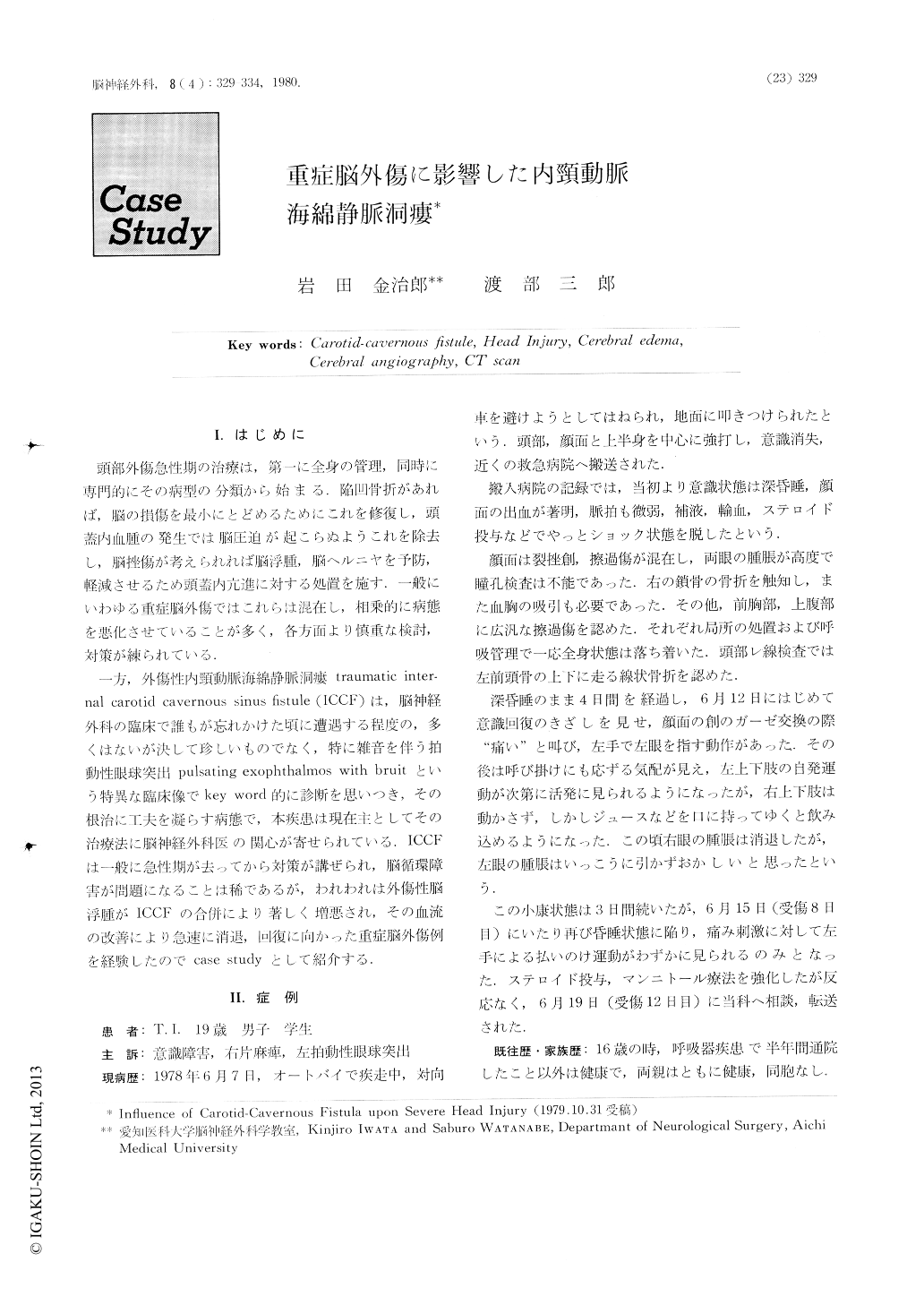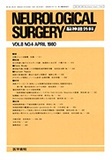Japanese
English
- 有料閲覧
- Abstract 文献概要
- 1ページ目 Look Inside
I.はじめに
頭部外傷急性期の治療は,第一に全身の管理,同時に専門的にその病型の分類から始まる.陥凹骨折があれば,脳の損傷を最小にとどめるためにこれを修復し,頭蓋内血腫の発生では脳圧迫が起こらぬようこれを除去し,脳挫傷が考えられれば脳浮腫,脳ヘルニヤを予防,軽減させるため頭蓋内亢進に対する処置を施す.一般にいわゆる重症脳外傷ではこれらは混在し,相乗的に病態を悪化させていることが多く,各方面より慎重な検討,対策が練られている.
一方,外傷性内頸動脈海綿静脈洞瘻traumatic internal carotid cavernous sinus fistule (ICCF)は,脳神経外科の臨床で誰もが忘れかけた頃に遭遇する程度の,多くはないが決して珍しいものでなく,特に雑音を伴う拍動性眼球突出pulsating exophthalinos with bruitという特異な臨床像でkey word的に診断を思いつき,その根治に工夫を凝らす病態で,本疾患は現在主としてその治療法に脳神経外科医の関心が寄せられている.ICCFは一般に急性期が去ってから対策が講ぜられ,脳循環障害が問題になることは稀であるが,われわれは外傷性脳浮腫がICCFの合併により著しく増悪され,その血流の改善により急速に消退,回復に向かった重症脳外傷例を経験したのでcase studyとして紹介する.
Although the angiogram of internal carotid cavernous fistula (ICCF) demonstrates striking feature suggesting disturbance of cerebral circulation, it is clinically fairly rare to see cerebral dysfunction in these cases. We have encountered a case in which ICCF must have played a big role in causing circulatory disturbance, resulting in disturbance of consciousness as well as motor paralysis, and surgical exclusion made prompt recovery of not only of pulsating exophthalmos but also of the disturbances of consciousness, motor, and speech function.

Copyright © 1980, Igaku-Shoin Ltd. All rights reserved.


